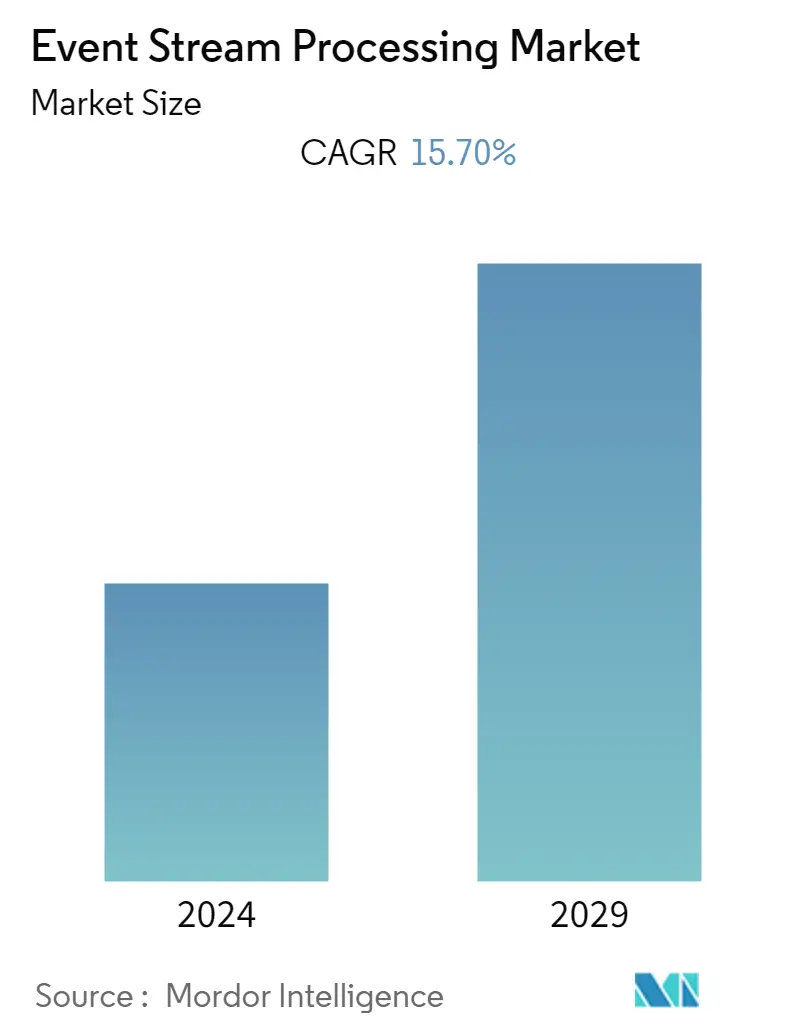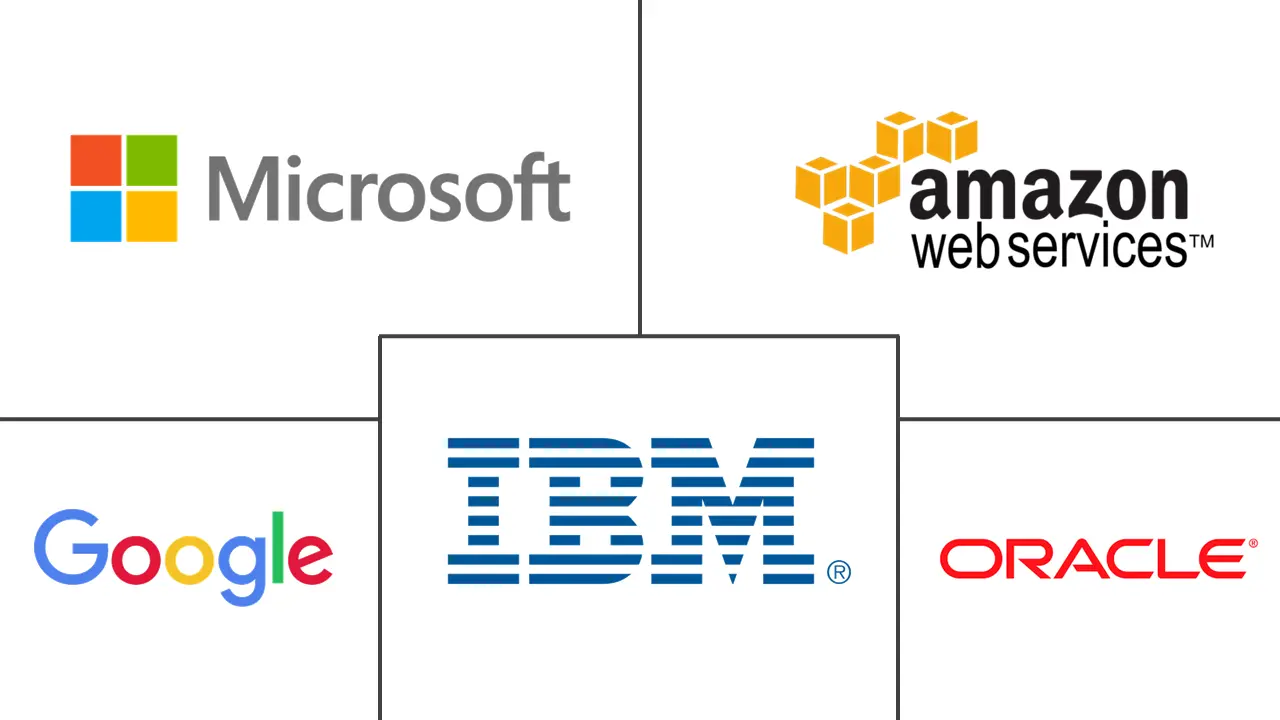Market Size of Event Stream Processing Industry

| Study Period | 2019 - 2029 |
| Base Year For Estimation | 2023 |
| CAGR | 15.70 % |
| Fastest Growing Market | Asia-Pacific |
| Largest Market | North America |
| Market Concentration | Medium |
Major Players
*Disclaimer: Major Players sorted in no particular order |
Need a report that reflects how COVID-19 has impacted this market and its growth?
Event Stream Processing Market Analysis
The Event Stream Processing (ESP) market is expected to witness a CAGR of 15.7% over the forecast period. This market's expansion can be attributed to rising demand for real-time analytics and increased awareness of big data's benefits across sectors. During the forecast period, the growth of the market is also expected to be helped by the growing use of cloud-based event stream processing solutions.
- According to MachEye, people produce 2.5 quintillion bytes of data daily, which is expected to grow faster each year. Business intelligence users are already struggling to translate this explosion of complex data into actionable insights. As a result, there would be a significant demand for more advanced, easy-to-use data translation tools.
- Targeted offers and predictive analytics enable merchants to develop highly personalized offers for all their customers at a very granular level. For instance, retailers can personalize the in-store experience by providing offers to incentivize frequent buying and drive more purchases, thereby achieving higher sales across all their channels. Predictive analytics can be used to upsell or cross-sell a customer. Further, predictive analytics helps businesses predict a customer's lifetime value (CLV). CLV helps forecast a customer's discounted value over time by analyzing past behavior to determine the most profitable customers over time.
- Further, due to the necessity for real-time processing of vast volumes of RFID data, the use of event stream processing in radio-frequency identification (RFID) event processing applications is quickly rising. RFID tags are connected to items or people and generate a signal that an RFID reader can read. This lets businesses keep track of where goods and people are in real time, which is important for many things like managing the supply chain and keeping people safe.
- According to a survey from Sisense, 50% of companies are utilizing predictive analytics more or much more than before the COVID-19 pandemic, including over 68% of small businesses. For instance, a significant challenge of the COVID-19 pandemic was ensuring that clients felt safe when visiting brick-and-mortar stores. With the help of business intelligence tools, social networking platforms, and customer relationship management (CRM) systems, companies could get direct feedback from customers and take the right steps to ensure everyone's health and safety.
- There is a significant increase in the requirement for data analytics and data visualization tools. For example, according to the IBM Quant Crunch, up to 2.72 million jobs require data science skills, making it one of the most in-demand roles across industries. College graduates from the MIS and CS departments know little about database modeling or real-world database environments. There are specific IT sciences majors with database classes, let alone business intelligence and analytics courses. There is a lack of exposure to tools and technologies found in the workplace.
